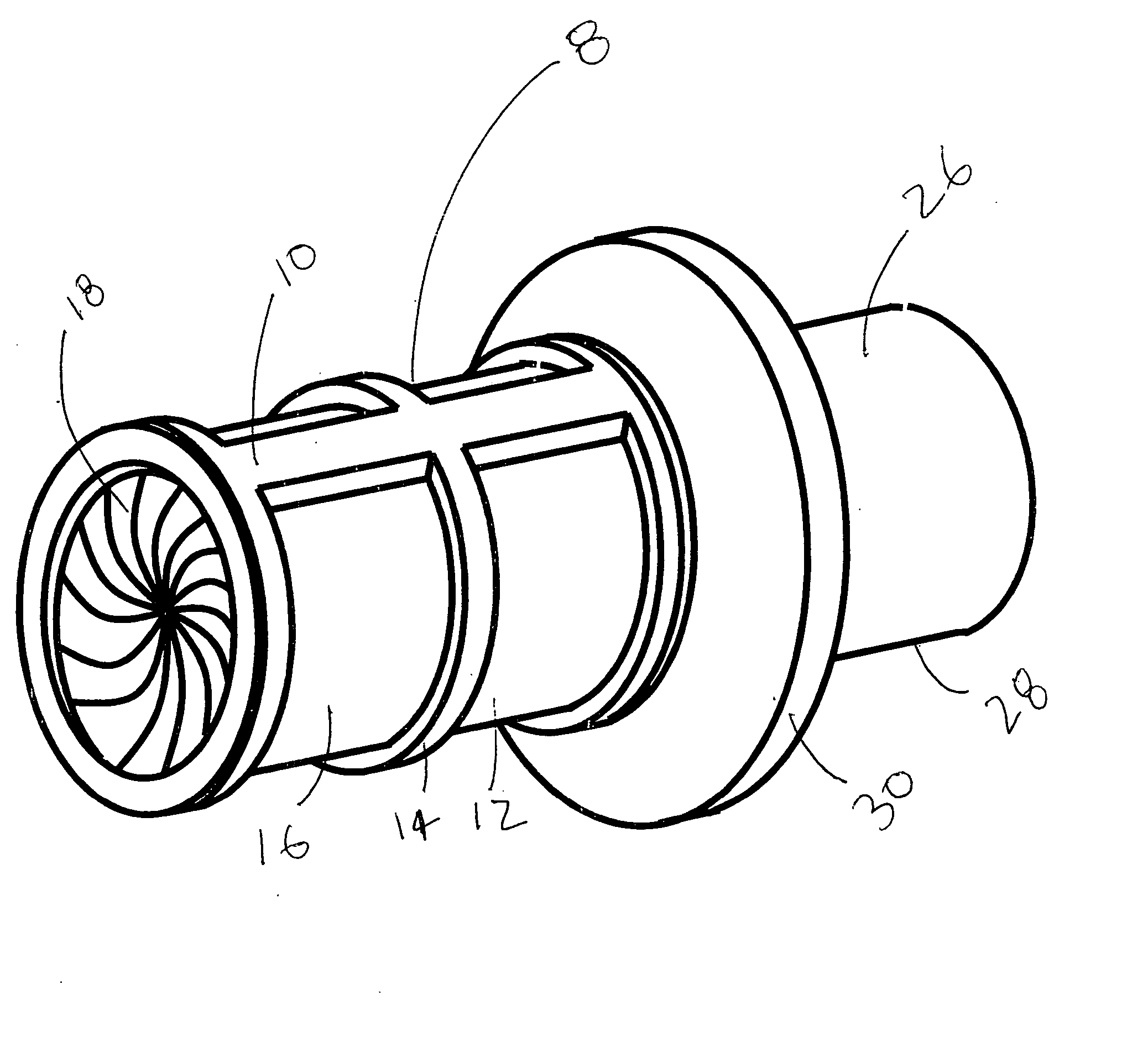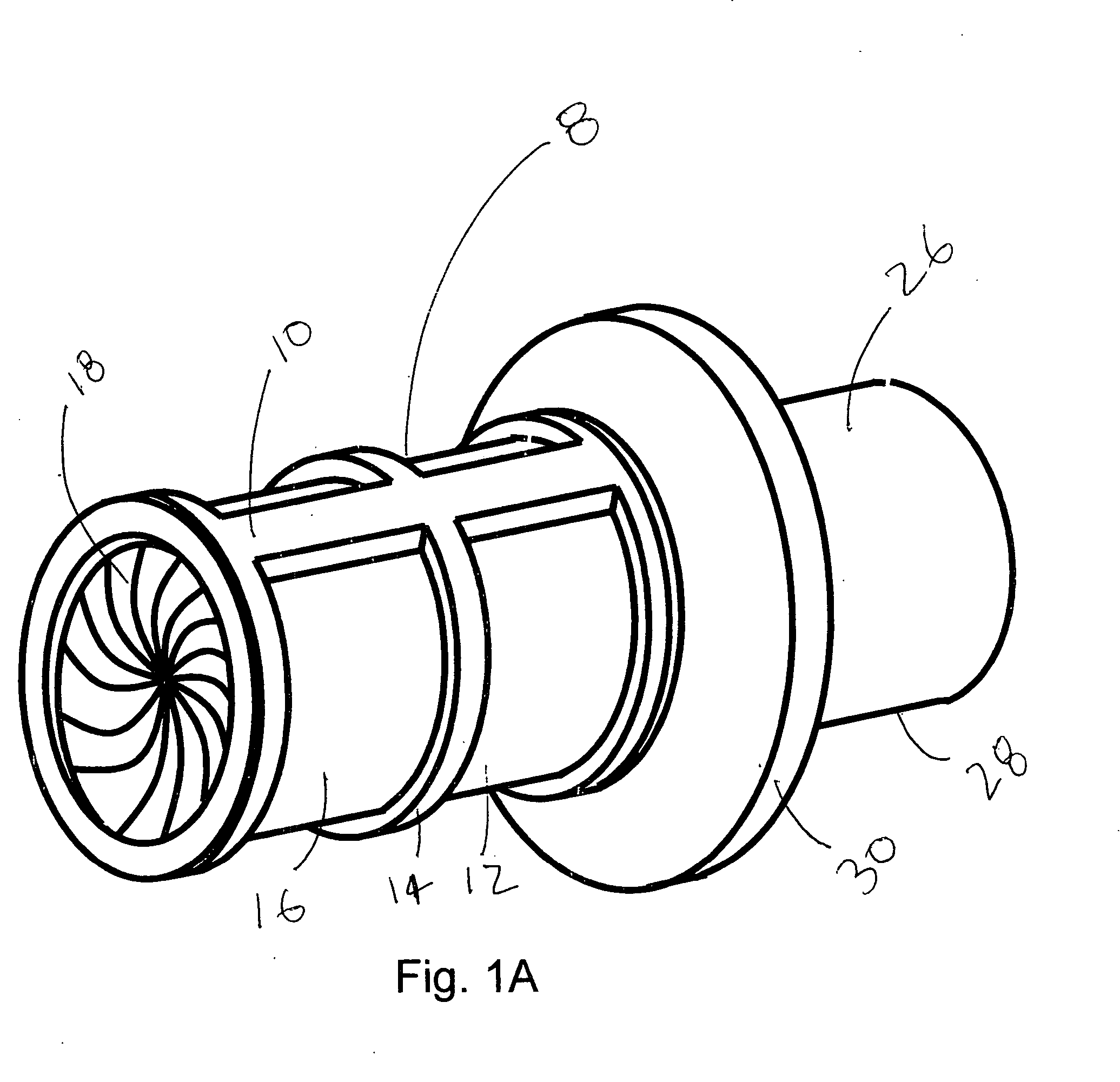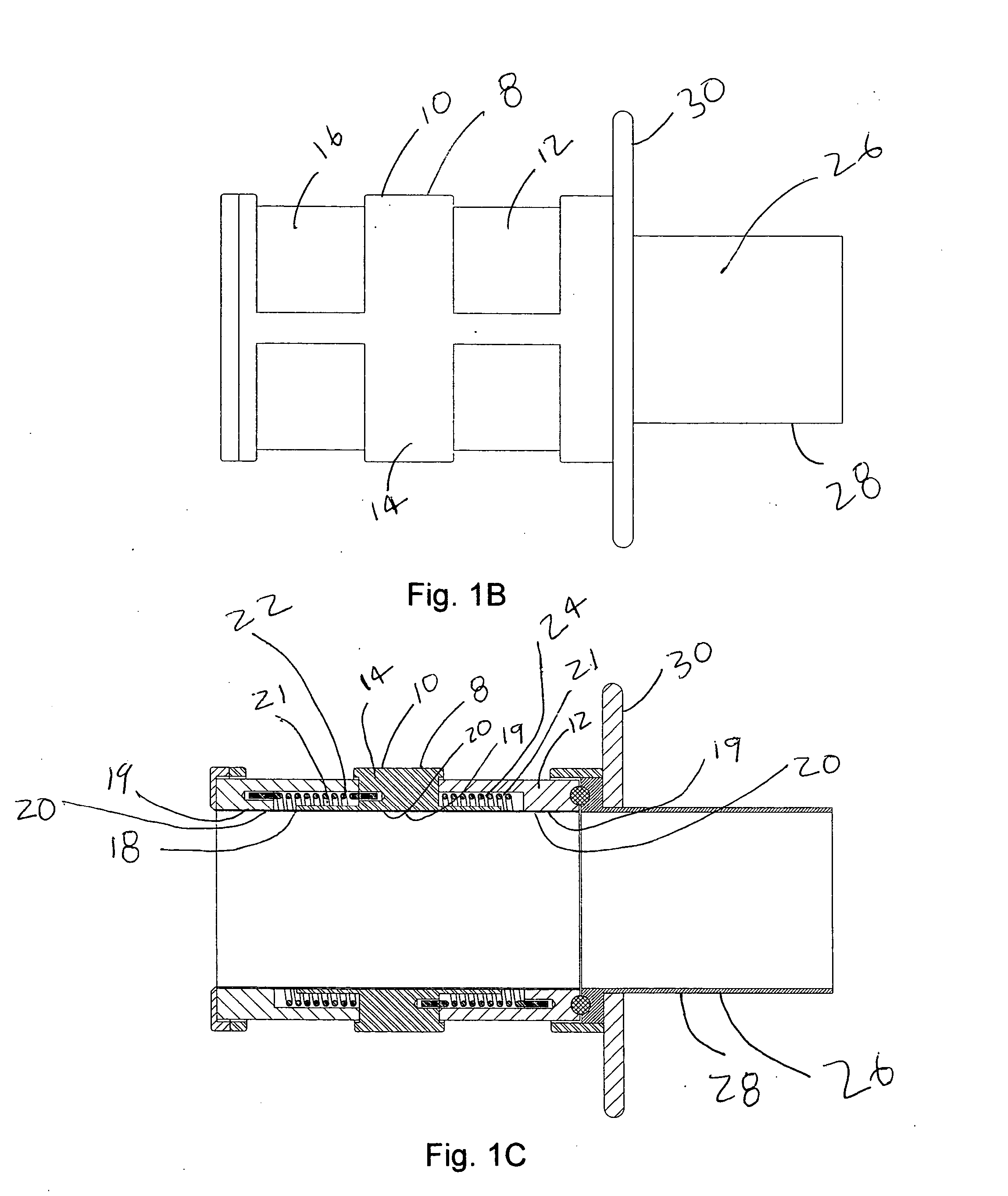Anatomical cavity implant transport device and method
a technology of anatomical cavity and transport device, which is applied in the field of anatomical cavity implant transport device, can solve the problems of difficult to insert a device without losing substantial body fluid, the device being inserted is exposed to excessive trauma during insertion, and the device being inserted is difficult to facilitate the placement of a non-compressible prosthetic valve through the wall, etc., to achieve safe and reliable insertion of relatively large devices, without significant blood loss, and without damage to the fragile device
- Summary
- Abstract
- Description
- Claims
- Application Information
AI Technical Summary
Benefits of technology
Problems solved by technology
Method used
Image
Examples
Embodiment Construction
Structure
[0039] A preferred embodiment of the Anatomical Cavity Implant Transport Device 8 is shown in FIGS. 1A, 1B, and 1C. The Device 8 is comprised of the following elements: a Cylindrical Element 10, an Elastomeric Tubular Element 18, an Attachment Means 19 to connect the Elastomeric Tubular Element 18 to the Cylindrical Element 10 at three locations, Rotational Means 21 to selectively bias the Elastomeric Tubular Element 18 into a twisted, closed configuration at two locations.
[0040] This embodiment can be further described. The Cylindrical Element 10 is comprised of a three independent components; a Distal Housing 12, a Cargo Housing 14, and a Proximal Housing 16. These housings are composed of suitable rigid biomedical materials such as a plastic, like polycarbonate or polyester, or a metal such as stainless steel. A Cylindrical Elastomeric Member 18 is located adjacent to and coaxial to the Cylindrical Element 10. The Elastomeric Member 18 is composed of latex, silicone, po...
PUM
 Login to View More
Login to View More Abstract
Description
Claims
Application Information
 Login to View More
Login to View More - R&D
- Intellectual Property
- Life Sciences
- Materials
- Tech Scout
- Unparalleled Data Quality
- Higher Quality Content
- 60% Fewer Hallucinations
Browse by: Latest US Patents, China's latest patents, Technical Efficacy Thesaurus, Application Domain, Technology Topic, Popular Technical Reports.
© 2025 PatSnap. All rights reserved.Legal|Privacy policy|Modern Slavery Act Transparency Statement|Sitemap|About US| Contact US: help@patsnap.com



